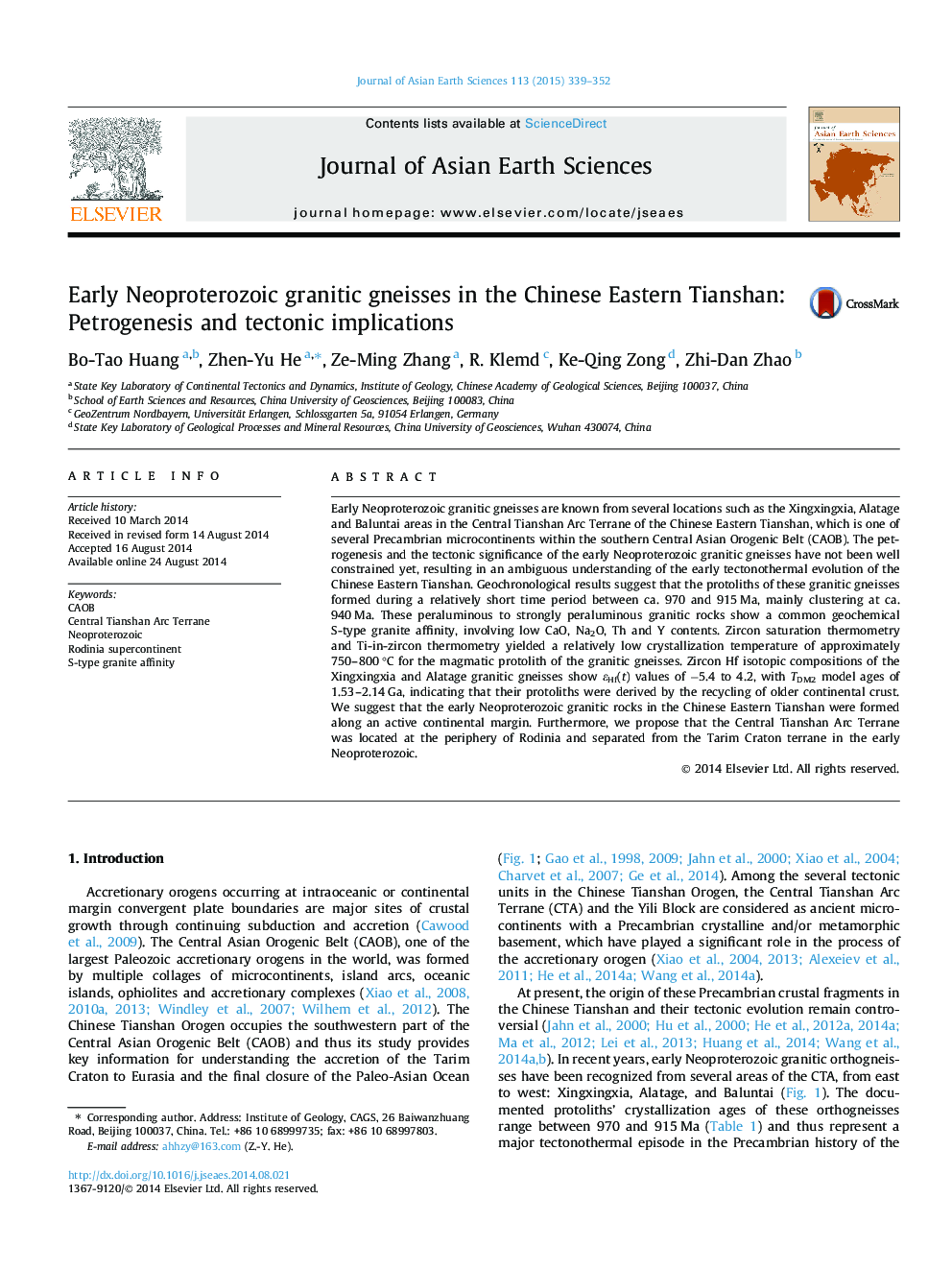| Article ID | Journal | Published Year | Pages | File Type |
|---|---|---|---|---|
| 4730232 | Journal of Asian Earth Sciences | 2015 | 14 Pages |
•Early Neoproterozoic granitic gneisses widely occur in the Central Tianshan Arc Terrane.•The early Neoproterozoic granitic gneisses exhibit S-type granite characteristics.•The early Neoproterozoic granitic gneisses formed in an active continental margin.•The Central Tianshan Arc Terrane at the periphery of Rodinia underwent a petrological evolution independent of that of the Tarim Craton.
Early Neoproterozoic granitic gneisses are known from several locations such as the Xingxingxia, Alatage and Baluntai areas in the Central Tianshan Arc Terrane of the Chinese Eastern Tianshan, which is one of several Precambrian microcontinents within the southern Central Asian Orogenic Belt (CAOB). The petrogenesis and the tectonic significance of the early Neoproterozoic granitic gneisses have not been well constrained yet, resulting in an ambiguous understanding of the early tectonothermal evolution of the Chinese Eastern Tianshan. Geochronological results suggest that the protoliths of these granitic gneisses formed during a relatively short time period between ca. 970 and 915 Ma, mainly clustering at ca. 940 Ma. These peraluminous to strongly peraluminous granitic rocks show a common geochemical S-type granite affinity, involving low CaO, Na2O, Th and Y contents. Zircon saturation thermometry and Ti-in-zircon thermometry yielded a relatively low crystallization temperature of approximately 750–800 °C for the magmatic protolith of the granitic gneisses. Zircon Hf isotopic compositions of the Xingxingxia and Alatage granitic gneisses show εHf(t) values of −5.4 to 4.2, with TDM2 model ages of 1.53–2.14 Ga, indicating that their protoliths were derived by the recycling of older continental crust. We suggest that the early Neoproterozoic granitic rocks in the Chinese Eastern Tianshan were formed along an active continental margin. Furthermore, we propose that the Central Tianshan Arc Terrane was located at the periphery of Rodinia and separated from the Tarim Craton terrane in the early Neoproterozoic.
Graphical abstractFigure optionsDownload full-size imageDownload as PowerPoint slide
